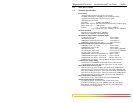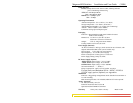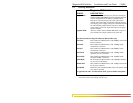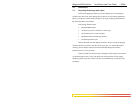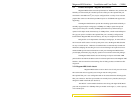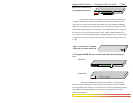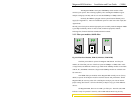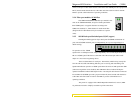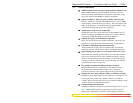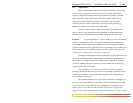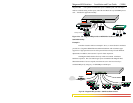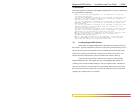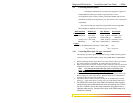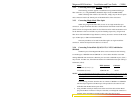
Magnum 4K8 Switches Installation and User Guide (10/04)
9
www GarrettCom com
..
2.2.6 Frame Buffering and Latency
The Magnum 4K8 are store-and-forward switches. Each frame (or packet) is
loaded into the Switch’s memory and inspected before forwarding can occur. This
technique ensures that all forwarded frames are of a valid length and have the correct
CRC, i.e., are good packets. This eliminates the propagation of bad packets, enabling all
of the available bandwidth to be used for valid information.
While other switching technologies such as "cut-through" or "express" impose
minimal frame latency, they will also permit bad frames to propagate out to the Ethernet
segments connected. The "cut-through" technique permits collision fragment frames,
which are a result of late collisions, to be forwarded to add to the network traffic. Since
there is no way to filter frames with a bad CRC (the entire frame must be present in order
for CRC to be calculated), the result of indiscriminate cut-through forwarding is greater
traffic congestion, especially at peak activity. Since collisions and bad packets are more
likely when traffic is heavy, the result of store-and-forward operation is that more
bandwidth is available for good packets when the traffic load is greatest.
To minimize the possibility of dropping frames on congested ports, each
Magnum 4K8 Switches dynamically allocates buffer space from an 1MB memory pool,
ensuring that heavily used ports receive very large buffer space for packet storage.
(Many other switches have their packet buffer storage space divided evenly across all
ports, resulting in a small, fixed number of packets to be stored per port. When the port
buffer fills up, dropped packets result.) This dynamic buffer allocation provides the
capability for the maximum resources of the Magnum 4K8 unit to be applied to all traffic
loads, even when the traffic activity is unbalanced across the ports. Since the traffic on
an operating network is constantly varying in packet density per port and in aggregate
density, the Magnum 4K8 Switches are constantly adapting internally to provide
maximum network performance with the least dropped packets.
When the Switch detects that its free buffer queue space is low, the Switch
sends industry standard (full-duplex only) PAUSE packets out to the devices sending
packets to cause “flow control”. This tells the sending devices to temporarily stop
sending traffic, which allows a traffic catch-up to occur without dropping packets. Then,
normal packet buffering and processing resumes. This flow-control sequence occurs in a
small fraction of a second and is transparent to an observer. See Section 4.6 for
additional details.



